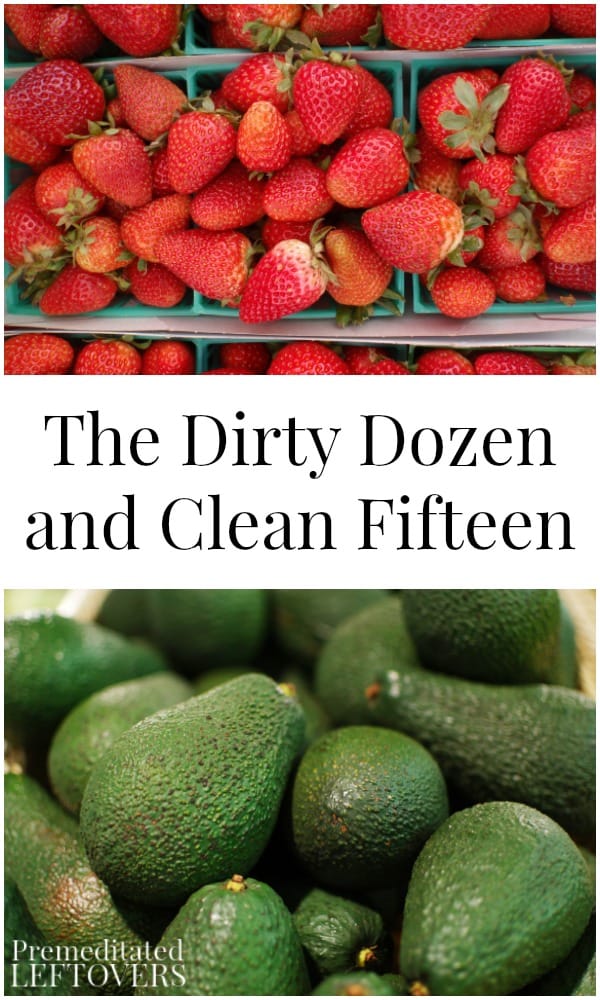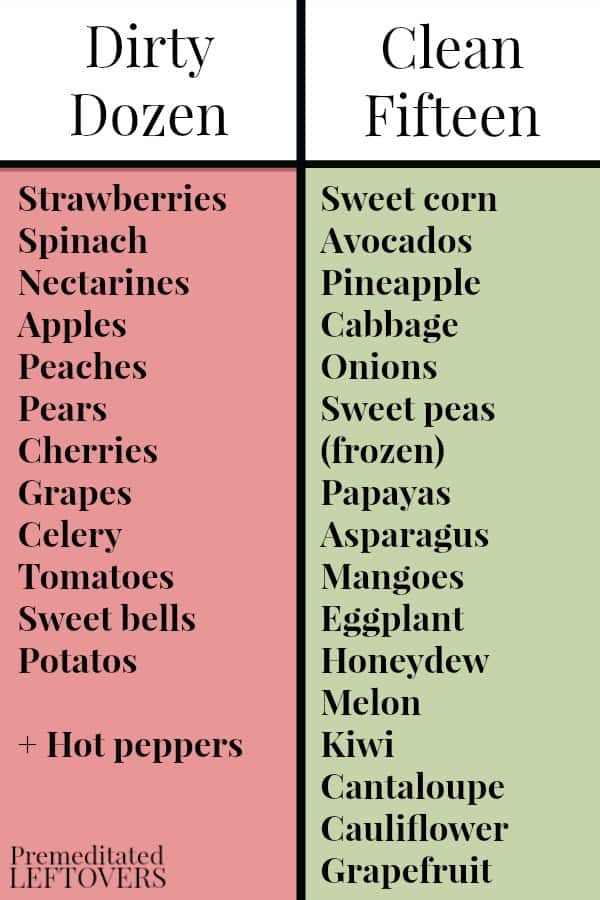This printable list of the Dirty Dozen and Clean Fifteen will make shopping for produce easier.

Feeding your family healthy foods is an important job in any parent’s daily schedule. A large part of keeping our family healthy is providing them a wide variety of fruits and vegetables. However, we all are trying to balance making healthy decisions with saving money!
When I share how I save money on organic produce, I always mention that I don’t buy all of my produce from the organic section. I use the Dirty Dozen and Clean Fifteen as my guide. The list is put out each year by the Environmental Working Group. They analyze commercially grown produce, list the produce that has the highest levels of contamination on their Dirty Dozen list and the produce with the lowest levels of contamination on their Clean Fifteen list. This helps me make an informed decision when buying fruits and vegetables for my family at the store.
The list also helps me when planning my garden each year. I try to grow as many of the items on the dirty dozen list in my garden so that I can ensure they are grown without pesticides and chemicals.
The Dirty Dozen and Clean Fifteen
The Dirty Dozen
These items have the highest levels of pesticide residue on them, so it is best to try to purchase these organic when possible.
- Strawberries
- Spinach
- Nectarines
- Apples
- Peaches
- Pears
- Cherries
- Grapes
- Celery
- Tomatoes
- Sweet bell peppers
- Potatoes
- Hot peppers
It is also recommended to buy zucchini, yellow crookneck squash, kale, and collards from the organic section.
The Clean 15
When it comes to the Clean 15, buying organic might still be a better option, but these items contain lower amounts of pesticide residue and can easily be cleaned and safely eaten.
- Sweet Corn
- Avocados
- Pineapple
- Cabbage
- Onions
- Sweet peas, frozen
- Papayas
- Asparagus
- Mangoes
- Eggplant
- Honeydew Melon
- Kiwi
- Cantaloupe
- Cauliflower
- Grapefruit
These lists can help you decide what produce to buy organic and which fruits and vegetables you can save money on by shopping from the regular produce section.


Carl Wright says
Thank you for sharing. Up in Canada I try to grow as much as I can organically (such as sweet corn) as I can,but some items such as avocadoes and pineapple of course it is not possible with our growing zone. Good information. Thank you.
Nellie Goldsmith says
I have to disagree with the “Clean 15” list…. quite a few of those items like corn and papaya are some or the most commonly genetically modified produce items in the world which means it’s even MORE critical to buy them organically. Although they may not be sprayed with as much pesticides, they are modified through genetics to be resistant to pests. Organic is ALWAYS a better option when buying produce. The food industry lies about so much that goes into and onto our food!
Jane says
In the US, GMO (or GE – genetically engineered) produce does not require labeling. While most fresh corn sold in the produce section is not GMO or GE, Monsanto has many grocers on board who began selling GE corn on the cob directly to consumers in 2012. Walmart is one of the largest retailers of GE corn on the cob and they DO NOT label it as such.
Alea Milham says
Good to know! Thanks for sharing that information.
dave @ HitTheRoad.ca says
Corn and papaya are commonly GMO …
Alea Milham says
From my research on corn, the corn in the produce section is usually not GMO. If it is, it requires special labeling. But if you want to be absolutely sure, it is best to grow it yourself!